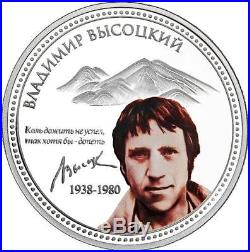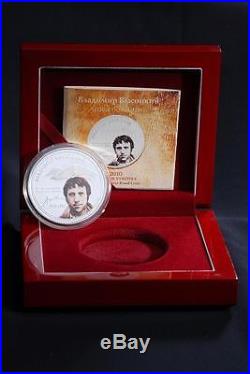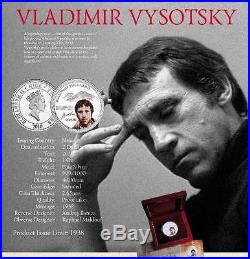Posts Tagged ‘famous’
14th February
2020




The Birth of the Railway. In 1812 Oliver Evans, a United States engineer and inventor, published his vision of what steam railways could become, with cities and towns linked by a network of long distance railways plied by speedy locomotives, greatly reducing the time required for personal travel and for transport of goods. Evans specified that there should be separate sets of parallel tracks for trains going in different directions. Unfortunately, conditions in the infant United States did not enable his vision to take hold. This vision had its counterpart in Britain, where it proved to be far more influential. William James, a rich and influential surveyor and land agent, was inspired by the development of the steam locomotive to suggest a national network of railways. He was responsible for proposing a number of projects that later came to fruition, and he is credited with carrying out a survey of the Liverpool and Manchester Railway. Unfortunately, he became bankrupt and his schemes were taken over by George Stephenson and others. However, he is credited by many historians with the title of Father of the Railway. Trans-Siberian Railway The Trans-Siberian Railway has long been an almost mythic experience. It is the longest continuous rail line, spanning eight time zones, with each run clattering along in an epic journey of almost six thousand miles (9289km) over one third of the globe. The Trans-Siberian Railway offers one of the very few classical once-in-the-lifetime trips which take the passengers through two continents with various landscapes and cultures. The Trans-Siberian also played a very direct role during parts of Russias history, with the Czechoslovak Legion using heavily armed and armoured trains to control large amounts of the railway (and of Russia itself) during the Russian Civil War at the end of World War I. As one of the only organised fighting forces left in the aftermath of the Imperial collapse, and before the Red Army took control, the Czechs and Slovaks were able to take use their organisation and the resources of the railway to establish a temporary zone of control before eventually continuing onwards towards Vladivostok, from where they emigrated back to Czechoslovakia through Americas and Germany. To further publicise the train, a recently-built Gresley A1 Class locomotive was named after the train, and put on display at the 1924 British Empire Exhibition. Due to a long-standing agreement between the competing West and East coast routes since the famous railway races of 1888 and 1895, speeds of the Scotch expresses were limited, the time for the 392 miles (631 km) between the capitals being a pedestrian 8h-15m. 20th Century Limited The 20th Century Limited was an express passenger train operated by the New York Central Railroad from 1902 to 1967, during which time it would become known as a National Institution and the Most Famous Train in the World. In the year of its last run, The New York Times said that it… Was known to railroad buffs for 65 years as the worlds greatest train. The train travelled between Grand Central Terminal in New York City and LaSalle Street Station in Chicago, Illinois along the railroads famed Water Level Route. The NYC inaugurated this train as direct competition to the Pennsylvania Railroads Broadway Limited, both lines intended for upper class as well as business travellers between the two cities. Making few station stops along the way and as few breaks for water and coal as possible, trains on this route routinely could complete the 960.7-mile journey in as little as 15½ hours (but usually in 16 hours), thus averaging at least 60 mph. The Orient Express The Orient Express is the name of a long-distance passenger train originally operated by the Compagnie Internationale des Wagons-Lits. Its route has changed many times, and several routes have in the past concurrently used the name (or slight variants thereof). Although the original Orient Express was simply a normal international railway service, the name has become synonymous with intrigue and luxury travel. The two city names most intimately associated with the Orient Express are Paris and Istanbul, the original endpoints of the service. Track Page Views With. Auctiva’s FREE Counter. The item “Niue set 4 coins Famous Express Trains proof colored silver 2010 Orient Express” is in sale since Wednesday, February 12, 2020. This item is in the category “Coins & Paper Money\Coins\ World\Australia & Oceania\Other Oceania Coins”. The seller is “silverbysilver” and is located in Philadelphia, Pennsylvania. This item can be shipped worldwide.
- Circulated/Uncirculated: Uncirculated
- Composition: Silver
- Modified Item: No
- Country/Region of Manufacture: Niue
- Certification: Uncertified
- Year: 2010
Comments Off
10th February
2020




The Birth of the Railway. In 1812 Oliver Evans, a United States engineer and inventor, published his vision of what steam railways could become, with cities and towns linked by a network of long distance railways plied by speedy locomotives, greatly reducing the time required for personal travel and for transport of goods. Evans specified that there should be separate sets of parallel tracks for trains going in different directions. Unfortunately, conditions in the infant United States did not enable his vision to take hold. This vision had its counterpart in Britain, where it proved to be far more influential. William James, a rich and influential surveyor and land agent, was inspired by the development of the steam locomotive to suggest a national network of railways. He was responsible for proposing a number of projects that later came to fruition, and he is credited with carrying out a survey of the Liverpool and Manchester Railway. Unfortunately, he became bankrupt and his schemes were taken over by George Stephenson and others. However, he is credited by many historians with the title of Father of the Railway. Trans-Siberian Railway The Trans-Siberian Railway has long been an almost mythic experience. It is the longest continuous rail line, spanning eight time zones, with each run clattering along in an epic journey of almost six thousand miles (9289km) over one third of the globe. The Trans-Siberian Railway offers one of the very few classical once-in-the-lifetime trips which take the passengers through two continents with various landscapes and cultures. The Trans-Siberian also played a very direct role during parts of Russias history, with the Czechoslovak Legion using heavily armed and armoured trains to control large amounts of the railway (and of Russia itself) during the Russian Civil War at the end of World War I. As one of the only organised fighting forces left in the aftermath of the Imperial collapse, and before the Red Army took control, the Czechs and Slovaks were able to take use their organisation and the resources of the railway to establish a temporary zone of control before eventually continuing onwards towards Vladivostok, from where they emigrated back to Czechoslovakia through Americas and Germany. To further publicise the train, a recently-built Gresley A1 Class locomotive was named after the train, and put on display at the 1924 British Empire Exhibition. Due to a long-standing agreement between the competing West and East coast routes since the famous railway races of 1888 and 1895, speeds of the Scotch expresses were limited, the time for the 392 miles (631 km) between the capitals being a pedestrian 8h-15m. 20th Century Limited The 20th Century Limited was an express passenger train operated by the New York Central Railroad from 1902 to 1967, during which time it would become known as a National Institution and the Most Famous Train in the World. In the year of its last run, The New York Times said that it… Was known to railroad buffs for 65 years as the worlds greatest train. The train travelled between Grand Central Terminal in New York City and LaSalle Street Station in Chicago, Illinois along the railroads famed Water Level Route. The NYC inaugurated this train as direct competition to the Pennsylvania Railroads Broadway Limited, both lines intended for upper class as well as business travellers between the two cities. Making few station stops along the way and as few breaks for water and coal as possible, trains on this route routinely could complete the 960.7-mile journey in as little as 15½ hours (but usually in 16 hours), thus averaging at least 60 mph. The Orient Express The Orient Express is the name of a long-distance passenger train originally operated by the Compagnie Internationale des Wagons-Lits. Its route has changed many times, and several routes have in the past concurrently used the name (or slight variants thereof). Although the original Orient Express was simply a normal international railway service, the name has become synonymous with intrigue and luxury travel. The two city names most intimately associated with the Orient Express are Paris and Istanbul, the original endpoints of the service. Track Page Views With. Auctiva’s FREE Counter. The item “Niue set 4 coins Famous Express Trains proof colored silver 2010 Orient Express” is in sale since Wednesday, February 5, 2020. This item is in the category “Coins & Paper Money\Coins\ World\Australia & Oceania\Other Oceania Coins”. The seller is “silverbysilver” and is located in Philadelphia, Pennsylvania. This item can be shipped worldwide.
- Circulated/Uncirculated: Uncirculated
- Composition: Silver
- Modified Item: No
- Country/Region of Manufacture: Niue
- Certification: Uncertified
- Year: 2010
Comments Off
26th April
2018




999 Proof Silver Coin Famous Russian Singer. 999 UNC Silver Coin Famous Russian Singer. Extremely LOW mintage limit, only 1938!! Certificate of Authenticity + Presentation case. Vladimir Vysotsky was an iconic Russian actor, singer-songwriter and public figure, who wrote over 700 songs and gave over 2000 public and private performances as an anti-establishment singer of the 60s and 70s in the former Soviet Union. He was one of the Soviet Union’s boldest and most celebrated actors who promoted individual freedom and helped lift Russian youth out of the state of apathy and fear under the Soviet dictator Brezhnev. In the movies, Vysotsky was best known as nifty detective Zheglov in “Mesto vstrechi izmenit nelzya” (1979) by director Stanislav Govorukhin. He was born Vladimir Semenovich Vysotsky on 25 January 1938, in Moscow, then the capital of the Soviet Union. His father, Semen Volfovich Vysotsky, was Jewish; he served in the Red Army during WWII, and was decorated for his courage rising to the rank of a Colonel. His mother, Nina Maximovna Seregina, was Russian; she worked as Russian-German interpreter. During WWII, Vladimir Vysotsky with his mother escaped from the advancing Nazis by evacuation from Moscow to Orenburg province in Siberia. After the war, the parents divorced and he was living with his father and stepmother in a Soviet Military garrison in East Germany. There, from 1947 to 1949, Vladimir Vysotsky was taking piano lessons; he also became an avid movie watcher. Upon returning to Moscow in the fall of 1949, he settled on Bolshoi Karetny, and went to the all-boys school No 186, from which he graduated in 1955. While at school, he attended the drama class of V. Bogomolov, an actor of the Moscow Art Theatre. From 1956 to 1960, he studied acting under Pavel Massalsky and Boris Vershilov at the Moscow Art Theatre Studio, graduating in 1960 as actor. He briefly worked at Moscow Pushkin Drama, then joined the troupe at the Taganka Theatre. Vysotsky made his film debut in Sverstnitsy (1959). In 1961, in Leningrad, during filming of 713 prosit posadku (1962) Vladimir Vysotsky met actress Lyudmila Abramova who became his wife and mother of his two sons Arkadi Vysotsky (born 1962) and Nikita Vysotskiy (born 1964). He was later married to the French-Russian actress Marina Vlady. During the 70s, he toured all over the former USSR and also made stage appearances in France, USA, Germany, Hungary, Poland, and Yugoslavia. Braking all traditions, Vysotsky appeared as Hamlet with the guitar in the Shakespare’s play directed by Yuri Lyubimov. Vysotsky’s Hamlet, dressed as a contemporary young man and playing his guitar, shook the Moscow establishment by overthrowing the traditional interpretation of the Shakespearean character. His opposition to Soviet authorities resulted in periodic bans of his songs. In 1968 Vysotsky wrote an open letter to the leading Soviet newspaper “Pravda” asking for fairness and equal rights; he requested that the official ban on his songs shall be lifted. However, the Soviet authorities stubbornly suppressed Vysotsky’s film and music career, causing him much moral pain and suffering. During the late 60s and 70s Vysotsky had problems with drugs and alcohol and suffered of a severe heart disorder which sent him into cardiac arrests on several occasions. In one case, his wife, Marina Vlady, noticed that he collapsed at home and saved his life by calling an ambulance, so he was hospitalized. He died while asleep at his home in Moscow, on 25 July, 1980. His death caused a considerable mourning in Russia. Thousands lined up to attend his funeral at Vagankovskoe Cemetery in Moscow. His numerous fans across Russia and the world continue the tradition of memorial concerts and gatherings on the 25th of July every year. His flower-adorned grave is a site of pilgrimage for his fans. 1 Oz / 31,1 g. Nice Authentic add to your collection. We are established and guarantee the authenticity of the products we sell. We have our inventory of precious metals bought only from reputable mints. Please consider your fair Feedback. Let us know if you need this overnight. We will do our best to accommodate your request. Fast shiiping will take 3-4 days(extra charge). For damaged items, please save all outside and inside packaging and wrapping for inspection by the Post Office. Return item must be sent within 14 days after it has been received. We will do our best to satisfy our customers. Fell free to contact if you have any questions. Track Page Views With. Auctiva’s FREE Counter. The item “Niue 2010 2$ Vladimir Vysotsky 1 Oz. 999 Proof Silver Coin Famous Russian Singer” is in sale since Wednesday, September 04, 2013. This item is in the category “Coins & Paper Money\Coins\ World\Australia & Oceania\South Pacific”. The seller is “worldancient” and is located in Etobicoke, Ontario. This item can be shipped worldwide.
Comments Off

